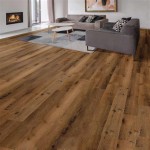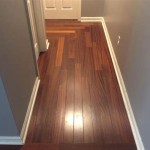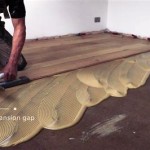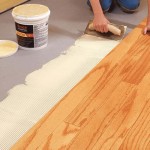Glue Down Vinyl Plank Flooring Install Cost: A Comprehensive Guide
Glue down vinyl plank flooring offers a durable, aesthetically pleasing, and cost-effective flooring solution for a variety of spaces. Its realistic wood or tile visuals, combined with water resistance and ease of maintenance, make it a popular choice for homeowners and businesses alike. However, understanding the costs associated with installation is crucial for proper budgeting and project planning. This article provides a detailed breakdown of the factors influencing the glue down vinyl plank flooring install cost, helping you make informed decisions about your next flooring project.
The overall cost of installing glue down vinyl plank flooring is influenced by several factors, including the type of vinyl plank, the subfloor condition, the complexity of the installation, and the labor costs in your specific geographical location. A thorough understanding of these variables will provide a more accurate estimate for the total project expense.
Key Factors Affecting Glue Down Vinyl Plank Flooring Installation Costs
Several variables significantly impact the overall cost of installing glue down vinyl plank flooring. Being aware of these factors allows for more precise budgeting and helps avoid unforeseen expenses during the installation process.
1. Cost of Materials (Vinyl Plank Flooring and Adhesive): The primary cost factor is the price of the vinyl plank flooring itself. Vinyl plank flooring is available in a wide range of qualities, styles, and thicknesses, each with a corresponding price point. Thicker planks, those with enhanced wear layers, and luxury vinyl planks typically command a higher price per square foot than thinner, standard options. The adhesive required to securely bond the planks to the subfloor also contributes to the material cost. The type of adhesive used depends on the specific vinyl plank flooring chosen and the subfloor material. Premium adhesives designed for specific applications, such as those with moisture-resistant properties or those suitable for high-traffic areas, will generally be more expensive.
2. Subfloor Preparation: The condition of the subfloor plays a critical role in the success and cost of a glue down vinyl plank installation. A smooth, level, clean, and dry subfloor is essential for proper adhesion and to prevent imperfections from telegraphing through the vinyl planks. Subfloor preparation may involve several steps, including removing existing flooring, patching cracks and holes, leveling uneven surfaces, and cleaning debris. Depending on the extent of the subfloor preparation required, this can significantly impact the overall project cost. For example, if the existing subfloor is severely damaged or uneven, it may necessitate the installation of a new underlayment or a self-leveling compound, adding to both material and labor expenses. Failure to adequately prepare the subfloor can lead to issues such as loose planks, uneven surfaces, and premature wear, ultimately requiring costly repairs or replacement.
3. Labor Costs: Labor costs represent a substantial portion of the total installation expense. The cost of labor varies depending on the geographical location, the experience and skill of the installer, and the complexity of the installation. More complex installations, such as those involving intricate patterns, custom cuts, or working around obstacles like stairs and cabinets, will typically require more time and expertise, resulting in higher labor charges. It is important to obtain multiple quotes from reputable flooring installers to compare prices and ensure that the quoted price includes all necessary aspects of the installation, such as subfloor preparation, plank installation, and clean-up. Choosing an experienced and qualified installer is crucial for achieving a professional and long-lasting result.
4. Room Size and Complexity: The size of the room being floored directly impacts the amount of materials required and the time needed for installation, thus influencing the overall cost. Larger rooms will naturally require more vinyl planks and adhesive. Furthermore, the complexity of the room's layout can also affect the installation cost. Rooms with numerous corners, angles, or built-in features require more precise cutting and fitting, increasing the time and skill required for installation. Irregularly shaped rooms often result in more waste of materials, further contributing to the overall expense.
5. Removal and Disposal of Existing Flooring: Removing and disposing of existing flooring can add to the overall cost, particularly if the existing flooring is difficult to remove or requires special handling. For example, removing old tile or carpet can be a labor-intensive process, and disposal fees may apply depending on the type of material and local regulations. Some flooring installers include the removal and disposal of existing flooring in their standard installation package, while others charge an additional fee. It is important to clarify whether removal and disposal are included in the quoted price to avoid unexpected charges.
6. Trim and Molding: After the vinyl plank flooring is installed, trim and molding are typically installed to conceal expansion gaps around the perimeter of the room and to provide a finished look. The cost of trim and molding depends on the material, style, and quantity required. Options range from basic vinyl or laminate trim to more elaborate wood or composite moldings. The installation of trim and molding also adds to the labor cost, as it requires precise cutting and fitting.
Estimating the Cost of Glue Down Vinyl Plank Flooring Installation
While the actual cost of installation can vary based on the factors discussed above, providing a general cost range can offer a helpful starting point for budgeting purposes. It's important to remember that these are estimates only, and obtaining quotes from local flooring installers is crucial for a more accurate assessment. The following cost components should be considered when estimating the total project cost.
1. Material Costs (Vinyl Plank Flooring): The cost of vinyl plank flooring typically ranges from $2 to $7 per square foot for the material itself. This range encompasses a wide variety of vinyl plank options, from basic, budget-friendly planks to high-end, luxury vinyl planks. Thicker planks with enhanced wear layers and realistic wood or tile visuals will generally be at the higher end of the price range. When selecting vinyl plank flooring, it's important to consider the intended use of the space and choose a product that is durable enough to withstand the expected traffic and wear. A higher quality vinyl plank will generally offer greater longevity and resistance to scratches, dents, and stains.
2. Material Costs (Adhesive): The cost of adhesive typically ranges from $0.50 to $1.50 per square foot, depending on the type of adhesive required and the coverage rate. The recommended adhesive will vary depending on the specific vinyl plank flooring chosen and the subfloor material. It is essential to use the adhesive recommended by the flooring manufacturer to ensure proper adhesion and prevent issues such as loose planks or bubbling. Some adhesives are specifically formulated for moisture-resistant applications, while others are designed for high-traffic areas. Choosing the right adhesive is critical for the long-term performance of the vinyl plank flooring.
3. Labor Costs: Labor costs for glue down vinyl plank flooring installation typically range from $2 to $5 per square foot. This range can vary depending on the installer's experience, the complexity of the installation, and the geographical location. More experienced installers with a proven track record may charge higher hourly rates, but their expertise can often result in a more professional and efficient installation. Complex installations involving intricate patterns, custom cuts, or working around obstacles will typically require more time and skill, resulting in higher labor charges. Obtaining multiple quotes from different installers is recommended to compare prices and ensure that the quoted price includes all necessary aspects of the installation, such as subfloor preparation, plank installation, and clean-up.
4. Subfloor Preparation Costs: Subfloor preparation costs can vary widely depending on the condition of the existing subfloor. In some cases, minimal preparation may be required, such as simply cleaning the subfloor and patching a few minor cracks. However, in other cases, more extensive preparation may be necessary, such as leveling uneven surfaces or installing a new underlayment. Subfloor preparation costs can range from $0.50 to $3 per square foot, depending on the extent of the work required. It is important to have the subfloor professionally inspected to determine the necessary preparation steps and obtain an accurate estimate of the associated costs. Neglecting proper subfloor preparation can lead to issues such as loose planks, uneven surfaces, and premature wear, ultimately requiring costly repairs or replacement.
5. Removal and Disposal Costs: Removal and disposal costs for existing flooring can range from $0.50 to $2 per square foot, depending on the type of flooring being removed and local disposal fees. Removing old tile or carpet can be a labor-intensive process, and disposal fees may apply depending on the type of material and local regulations. Some flooring installers include the removal and disposal of existing flooring in their standard installation package, while others charge an additional fee. It is important to clarify whether removal and disposal are included in the quoted price to avoid unexpected charges.
6. Trim and Molding Costs: The cost of trim and molding typically ranges from $1 to $3 per linear foot, depending on the material, style, and quantity required. Options range from basic vinyl or laminate trim to more elaborate wood or composite moldings. The installation of trim and molding also adds to the labor cost, as it requires precise cutting and fitting. The type of trim and molding chosen will depend on the overall aesthetic of the room and the desired level of detail.
Cost-Saving Strategies for Glue Down Vinyl Plank Flooring Installation
While installing glue down vinyl plank flooring can represent a significant investment, there are several strategies that can help reduce the overall cost without compromising the quality of the installation. Implementing these tips can lead to substantial savings and ensure that the project remains within budget.
1. DIY Subfloor Preparation: If you possess the necessary skills and tools, performing some or all of the subfloor preparation work yourself can significantly reduce labor costs. This may involve tasks such as removing existing flooring, patching cracks and holes, and cleaning the subfloor. However, it is crucial to ensure that the subfloor is properly prepared to avoid issues with the vinyl plank installation. If you are unsure about any aspect of subfloor preparation, it is best to consult with a professional flooring installer.
2. Purchase Materials Strategically: Shopping around for the best prices on vinyl plank flooring and adhesive can lead to substantial savings. Compare prices from different retailers and suppliers, and look for sales or discounts. Purchasing materials in bulk may also qualify for a discount. Consider opting for a slightly less expensive vinyl plank flooring option without sacrificing quality or durability. Explore different styles and thicknesses to find a product that meets your budget and aesthetic requirements. However, it is important to ensure that the chosen vinyl plank flooring is suitable for the intended use of the space and will withstand the expected traffic and wear.
3. Get Multiple Quotes: Obtaining multiple quotes from different flooring installers is crucial for comparing prices and ensuring that you are getting a fair deal. Request detailed quotes that include all aspects of the installation, such as subfloor preparation, plank installation, and clean-up. Compare the quotes carefully, paying attention to the materials being used, the labor rates, and any additional fees. Do not automatically choose the lowest quote, as it may indicate lower quality materials or workmanship. Consider the installer's experience, reputation, and customer reviews when making your decision.
4. Consider Simpler Installation Patterns: Complex installation patterns, such as herringbone or diagonal layouts, require more precise cutting and fitting, increasing the time and skill required for installation. Opting for a simpler installation pattern, such as a straight or staggered layout, can reduce labor costs and material waste. A simpler pattern can still achieve a visually appealing result while simplifying the installation process.
5. Minimize Waste: Carefully measure the room and calculate the amount of vinyl plank flooring and adhesive needed to minimize waste. Account for cuts and trim when calculating the required materials. Avoid purchasing excessive amounts of materials that may not be needed. Proper planning and accurate measurements can help reduce material waste and save money.

How Much Does It Cost To Install Vinyl Flooring Homeserve Usa

Fixr Com Cost To Install Vinyl Plank Flooring S

Floating Vinyl Plank Flooring Vs Glue Down 99cent Floor

What S The Cost To Install Vinyl Plank Flooring Floorings

Average Cost Of Vinyl Flooring Installation In 2024 Forbes Home

What Does Lvt Flooring Cost In 2024 Checkatrade

Cost To Install Vinyl Plank Flooring A Complete Guide 2024 Forbes Home

How Much Does It Cost To Install Vinyl Flooring

Vinyl Plank Flooring Installation Cost In 2024

Glue Down Vs Floating Lvp Which Is Better Whole Cabinet Supply
Related Posts








